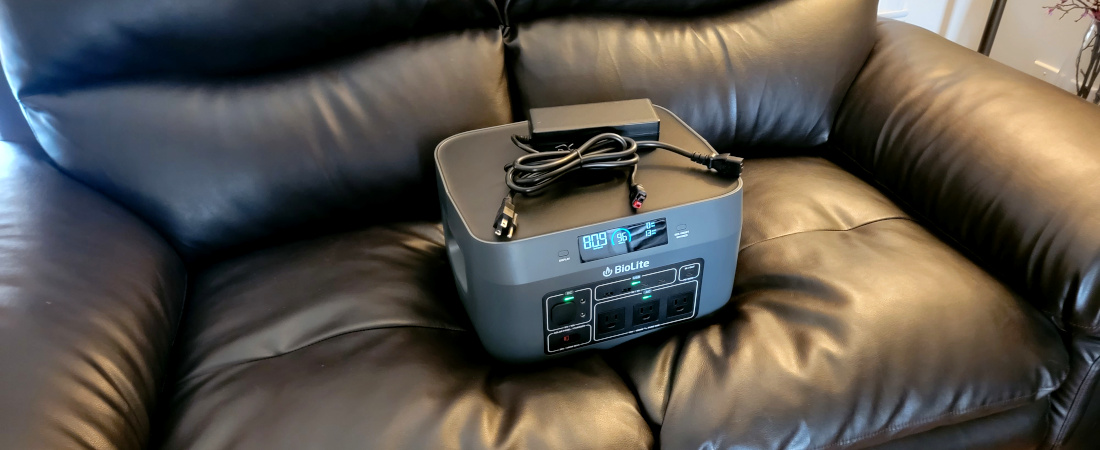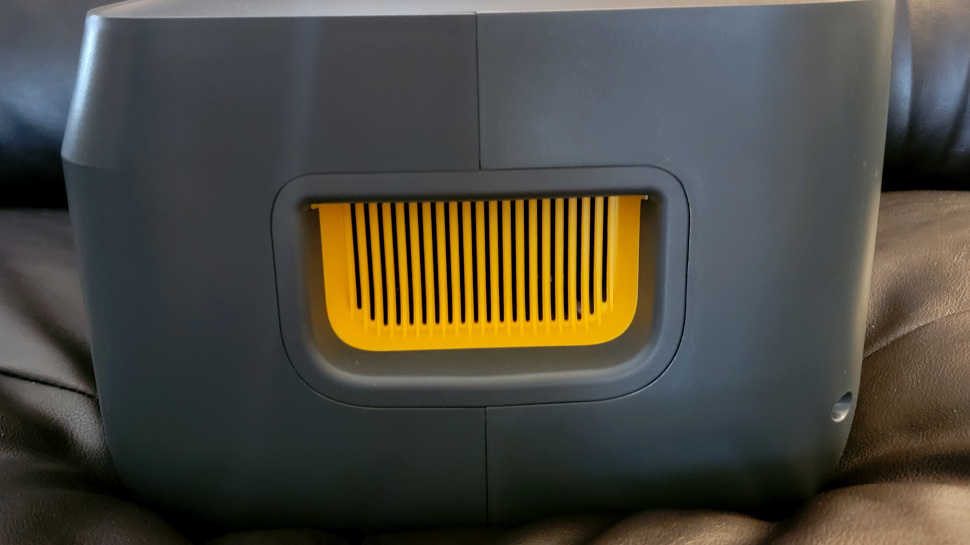
The BioLite BaseCharge 1500 power station can easily be mistaken for a desktop printer, but weighing almost 13kg is much heavier. A large segmented display shows parameters such as battery capacity, input-output power usage, and the unit’s status. The built-in odometer shows how much energy the station has supplied. Features are accessible with a single button press, making the BaseCharge simple to use.
The NMC-based 1521Wh battery offers 500 charge cycles before incurring an 80% capacity drop. The top surface provides 10W wireless charging power, and the 1200W AC inverter can output 2400W for short intervals. Charging through the wall adapter takes up to 13.5 hours, which is more than the competition. However, features such as wireless connectivity or UPS mode are missing.
Overall, how does the BioLite BaseCharge 1500 compare to the best portable power stations? Let's see...
BioLite BaseCharge 1500: Pricing and availability
The BioLite BaseCharge is available in two power ranges. The 600W inverter model with a 622Wh battery costs $699, while the 1200W/1521Wh model costs $1699. A compatible 100W solar panel will add $400. Both models offer the same DC output options and are covered by a two-year warranty.

BioLite BaseCharge 1500: Design
The Biolite BaseCharge 1500 portable power station features two recessed handles on each side, which we found made for a comfortable grip while lifting the unit. A single fan on the right side generates very little noise when charging or providing power. The grey case measures 36.7 cm x 31 cm x 20.9 cm for 12.9 kg and ships with a 120W AC adapter, a power cord, and a user manual.
The display of the BaseCharge 1500 immediately attracted our attention with its blue and white color theme. The high-contrast LCD made it easy for use to view from a few meters, even in broad daylight. It shows the remaining battery capacity in hours, input and output power consumption, and any issues, such as exceeding the power rating. The bottom screen holds a twenty-character line showing the odometer, among other things.
The front panel conveniently groups all sockets of the BaseCharge 1500 by function, each enabled by a push button. The AC output can supply 1200W across three sockets, while the USB Type-A and C sockets deliver 15W each. An additional 100W Type-C located to the right of the USB group can be used both as input and output and starts working simply by connecting a device. The DC section contains three sockets that combine to give 120W at 12V.
The solar panel socket below the DC section easily handles panels of up to 400W at 30V. The same input charges the station using the supplied AC power adapter. Solar panels can charge an empty station in less than four hours. The AC adapter, on the other hand, is a sloth and will take about 13 hours to fill empty cells.

BioLite BaseCharge 1500: In use
The BioLite BaseCharge has a built-in 10W wireless charging surface, which can quickly boost smartphones. The surface activates by pressing any button on the front panel. The energy odometer, similar to those found in cars, displays the accumulated power provided by the station since the last reset. It is helpful to estimate the energy usage of particular devices and if enough charge will be available during a power outage.
NMC cells, as used in the BaseCharge 1500, incur a 20% charge loss after 500 charge cycles. The station’s 1521Wh battery will last several years if not charged daily. The 1200W AC inverter, with an efficiency of 75%, supports pure sine wave technology and can output up to 2400W for short durations. The station does not suffer from self-discharge when unused for a long time.
Thanks to a comprehensive display with an alphanumeric section, understanding error conditions, such as when the output power exceeds its limit, is a breeze. Warning and error messages are cleared by removing the fault and power cycling the affected output section with its push button.
BioLite BaseCharge 1500: The competition
Choosing a power station suitable for one’s needs is becoming more challenging due to the wide selection of models available. Established names, such as Jackery and Ecoflow, take a significant share of the cake. With a battery-based product, the first thing to check is the warranty and what’s covered by it. It is paramount to have a free or low-cost replacement if something unfortunate happens to the unit.
The Jackery Explorer 1500 has similar features compared to the BaseCharge 1500. A 1534Wh battery supplies a 1800W AC inverter and a few DC outputs. The Explorer 1500 LCD provides less information than the BaseCharge 1500, and for the same price, it comes with fewer output sockets and no wireless charging.
BioLite BaseCharge 1500: Final verdict
The BaseCharge 1500 power station is a great office accessory. It has enough sockets to serve five USB devices while supporting up to three AC outlets. The crisp display and energy odometer help to plan power usage ahead of an emergency, while a low-key design effortlessly blends on the desk without being too noisy. The BaseCharge 1500 is also light enough to be carried on the road and supports three types of charging.
The BaseCharge 1500, with its external 120W AC adapter, takes almost 13 hours to top the internal NMC cells. The external adapter also prevents the station from having a UPS mode, which would have been great for working from home.







